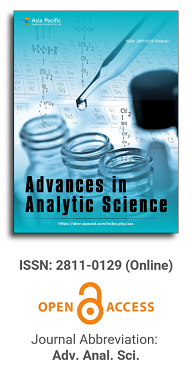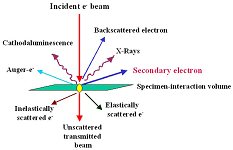
Asia Pacific Academy of Science Pte. Ltd. (APACSCI) specializes in international journal publishing. APACSCI adopts the open access publishing model and provides an important communication bridge for academic groups whose interest fields include engineering, technology, medicine, computer, mathematics, agriculture and forestry, and environment.

Natural and synthetic cavitands: Challenges in chemistry and pharmaceutical technology
Vol 3, Issue 1, 2022
Download PDF
Abstract
Supramolecular chemistry involves non-covalent interactions and specific molecular recognition of molecules/analytes by host molecules or supramolecules. These events are present in synthesis, catalysis, chiral separations, design of sensors, cell signaling processes and drug transport by carriers. The typical behavior of supramolecules is derived from their ability to build well-structured self-assembled and self-organized entities. Cavitands are a particular group of supramolecules possessing a cavity capable to include a variety of compounds thanks to host-guest non-covalent interactions developed among cavitands and analytes. Some typical cavitands are crown ethers, calixarenes, cucurbiturils, porphyrins and cyclodextrins. The two latter families are natural product cavitands that are generally considered models for molecular recognition of cations and organic and inorganic guest molecules, being attractive host molecules from the sustainability point of view. The natural cyclodextrins (α, β and γ-cd) are obtained with reasonable cost by enzymatic treatment of starch under adequate temperature conditions. They are profusely used in pharmaceutical, food and cosmetic industries due to their very low toxicity and side effects. This review is focused on the relevance andapplications of cyclodextrins in pharmaceuticaltechnology for their ability to increase solubility and stabilize drug molecules, thereby enhancing their bioavailability. The association of cyclodextrins with diverse nanostructured materials, i.e., carbon nanotubes, magnetic nanoparticles, silica and molecularly imprinted polymers, allows to synergize the properties of cyclodextrins and these nanostructured materials to reach highly specific molecular recognition of analytes. The exploitation of these benefits for analytical sample pre-treatment and chiral chromatographic separations are described. The use of cyclodextrins as mobile phases additives in hplc provides interesting results for green and sustainable chromatographic separations. Polymers incorporating cyclodextrins show exceptional adsorption properties for retaining toxic compounds and persistent organic pollutants from soils and water samples, allowing satisfactory recoveries of these environmental samples according to the stockholm convection principles.
Keywords
References
- Shenderovich IG. Editorial to the Special Issue “Gulliver in the Country of Lilliput: An Interplay of Noncovalent Interactions.” Molecules. 2020; 26(1): 158. doi: 10.3390/molecules26010158
- Ariga K, Kunitake T. Supramolecular Chemistry—Fundamentals and Applications. Springer Berlin Heidelberg; 2006. doi: 10.1007/b137036
- Schneider H. Binding Mechanisms in Supramolecular Complexes. Angewandte Chemie International Edition. 2009; 48(22): 3924-3977. doi: 10.1002/anie.200802947
- Davis ME, Brewster ME. Cyclodextrin-based pharmaceutics: past, present and future. Nature Reviews Drug Discovery. 2004; 3(12): 1023-1035. doi: 10.1038/nrd1576
- Lagona J, Mukhopadhyay P, Chakrabarti S, et al. The Cucurbit[n]uril Family. Angewandte Chemie International Edition. 2005; 44(31): 4844-4870. doi: 10.1002/anie.200460675
- Gavvala K, Sengupta A, Hazra P. Modulation of Photophysics and pKa Shift of the Anti‐cancer Drug Camptothecin in the Nanocavities of Supramolecular Hosts. ChemPhysChem. 2013; 14(3): 532-542. doi: 10.1002/cphc.201200879
- Li J. Cyclodextrin inclusion polymers forming hydrogels. Adv polym sci. 2009; 175-203. doi: 10.1007/12_2008_9
- Kang SO, Llinares JM, Day VW, et al. Cryptand-like anion receptors. Chemical Society Reviews. 2010; 39(10): 3980. doi: 10.1039/c0cs00083c
- Anderson J, Berthod A, Pino V, Stalcup AM. Analytical separation science. Wiley-Vch; 2016.
- Szabó Z, Foroughbakhshfasaei M, Gál R, et al. Chiral separation of lenalidomide by liquid chromatography on polysaccharide‐type stationary phases and by capillary electrophoresis using cyclodextrin selectors. Journal of Separation Science. 2018; 41(6): 1414-1423. doi: 10.1002/jssc.201701211
- Li Z, Zhou K, Lai Y, et al. Synthesis of Calix[4]proline Derivatives and Their Chiral Recognition for Enantiomers of Mandelic Acid (Chinese). Chinese Journal of Organic Chemistry. 2015; 35(7): 1531. doi: 10.6023/cjoc201502018
- Crini G. Review: A History of Cyclodextrins. Chemical Reviews. 2014; 114(21): 10940-10975. doi: 10.1021/cr500081p
- Dodziuk H. Cyclodextrins and Their Complexes. Wiley-Vch; 2006. doi: 10.1002/3527608982
- Bilensoy E. Cyclodextrins in Pharmaceutics, Cosmetics, and Biomedicine. John Wiley & Sons; 2011. doi: 10.1002/9780470926819
- Kurkov SV, Loftsson T. Cyclodextrins. International Journal of Pharmaceutics. 2013; 453(1): 167-180. doi: 10.1016/j.ijpharm.2012.06.055
- Uekama K, Hirayama F. Improvement of Drug Properties by Cyclodextrins. The Practice of Medicinal Chemistry. Published online 2008: 813-840. doi: 10.1016/b978-0-12-374194-3.00040-8
- Popielec A, Loftsson T. Effects of cyclodextrins on the chemical stability of drugs. International Journal of Pharmaceutics. 2017; 531(2): 532-542. doi: 10.1016/j.ijpharm.2017.06.009
- Muñoz-Botella S, MartÍN MA, Del Castillo B, et al. Differentiating geometrical isomers of retinoids and controlling their photo-isomerization by complexation with cyclodextrins. Anal chim acta. 2002; 468: 161-170. doi: 10.1016/S0003-2670(02)00629-3
- Saokham P, Muankaew C, Jansook P, et al. Solubility of Cyclodextrins and Drug/Cyclodextrin Complexes. Molecules. 2018; 23(5): 1161. doi: 10.3390/molecules23051161
- González-Ruiz V, Olives AI, Martín MA. A down-scaled fluorimetric determination of the solubility properties of drugs to minimize waste generation. Green Chemistry. 2013; 15(9): 2558. doi: 10.1039/c3gc40974k
- Buszewski B, Szultka M. Past, Present, and Future of Solid Phase Extraction: A Review. Critical Reviews in Analytical Chemistry. 2012; 42(3): 198-213. doi: 10.1080/07373937.2011.645413
- Andrade-Eiroa A, Canle M, Leroy-Cancellieri V, et al. Solid-phase extraction of organic compounds: A critical review (Part I). TrAC Trends in Analytical Chemistry. 2016; 80: 641-654. doi: 10.1016/j.trac.2015.08.015
- Andrade-Eiroa A, Canle M, Leroy-Cancellieri V, et al. Solid-phase extraction of organic compounds: A critical review. part ii. TrAC Trends in Analytical Chemistry. 2016; 80: 655-667. doi: 10.1016/j.trac.2015.08.014
- Płotka-Wasylka J, Szczepańska N, de la Guardia M, et al. Modern trends in solid phase extraction: New sorbent media. TrAC Trends in Analytical Chemistry. 2016; 77: 23-43. doi: 10.1016/j.trac.2015.10.010
- Mehdinia A, Aziz-Zanjani MO. Advances for sensitive, rapid and selective extraction in different configurations of solid-phase microextraction. TrAC Trends in Analytical Chemistry. 2013; 51: 13-22. doi: 10.1016/j.trac.2013.05.013
- Trotta F, Zanetti M, Cavalli R. Cyclodextrin-based nanosponges as drug carriers. Beilstein Journal of Organic Chemistry. 2012; 8: 2091-2099. doi: 10.3762/bjoc.8.235
- Swaminathan S, Pastero L, Serpe L, et al. Cyclodextrin-based nanosponges encapsulating camptothecin: Physicochemical characterization, stability and cytotoxicity. European Journal of Pharmaceutics and Biopharmaceutics. 2010; 74(2): 193-201. doi: 10.1016/j.ejpb.2009.11.003
- Sherje AP, Dravyakar BR, Kadam D, et al. Cyclodextrin-based nanosponges: A critical review. Carbohydrate Polymers. 2017; 173: 37-49. doi: 10.1016/j.carbpol.2017.05.086
- Cai K, Li J, Luo Z, et al. β-Cyclodextrin conjugated magnetic nanoparticles for diazepam removal from blood. Chemical Communications (Chinese). 2011; 47(27): 7719. doi: 10.1039/c1cc11855b
- Gaber Ahmed GH, Badía Laíño R, García Calzón JA, et al. Magnetic nanoparticles grafted with β-cyclodextrin for solid-phase extraction of 5-hydroxy-3-indole acetic acid. Microchimica Acta. 2014; 181(9-10): 941-948. doi: 10.1007/s00604-014-1192-y
- Azzouz A, Kailasa SK, Lee SS, et al. Review of nanomaterials as sorbents in solid-phase extraction for environmental samples. TrAC Trends in Analytical Chemistry. 2018; 108: 347-369. doi: 10.1016/j.trac.2018.08.009
- Xu Z, Kuang D, Liu L, et al. Selective adsorption of norfloxacin in aqueous media by an imprinted polymer based on hydrophobic and electrostatic interactions. Journal of Pharmaceutical and Biomedical Analysis. 2007; 45(1): 54-61. doi: 10.1016/j.jpba.2007.05.024
- Lay S, Ni X, Yu H, et al. State‐of‐the‐art applications of cyclodextrins as functional monomers in molecular imprinting techniques: a review. Journal of Separation Science. 2016; 39(12): 2321-2331. doi: 10.1002/jssc.201600003
- Ikai T, Okamoto Y. Structure Control of Polysaccharide Derivatives for Efficient Separation of Enantiomers by Chromatography. Chemical Reviews. 2009; 109(11): 6077-6101. doi: 10.1021/cr8005558
- Zhou J, Yang B, Tang J, et al. Cationic cyclodextrin clicked chiral stationary phase for versatile enantioseparations in high-performance liquid chromatography. Journal of Chromatography A. 2016; 1467: 169-177. doi: 10.1016/j.chroma.2016.06.030
- Silva M, Pérez-Quintanilla D, Morante-Zarcero S, et al. Ordered mesoporous silica functionalized with β- cyclodextrin derivative for stereoisomer separation of flavanones and flavanone glycosides by nano-liquid chromatography and capillary electrochromatography. Journal of Chromatography A. 2017; 1490: 166-176. doi: 10.1016/j.chroma.2017.02.012
- Yao X, Tan TTY, Wang Y. Thiol–ene click chemistry derived cationic cyclodextrin chiral stationary phase and its enhanced separation performance in liquid chromatography. Journal of Chromatography A. 2014; 1326: 80-88. doi: 10.1016/j.chroma.2013.12.054
- Pang L, Zhou J, Tang J, et al. Evaluation of perphenylcarbamated cyclodextrin clicked chiral stationary phase for enantioseparations in reversed phase high performance liquid chromatography. Journal of Chromatography A. 2014; 1363: 119-127. doi: 10.1016/j.chroma.2014.08.040
- Kučerová G, Procházková H, Kalíková K, et al. Sulfobutylether-β-cyclodextrin as a chiral selector for separation of amino acids and dipeptides in chromatography. Journal of Chromatography A. 2016; 1467: 356-362. doi: 10.1016/j.chroma.2016.07.061
- Li L, Lurie IS. Regioisomeric and enantiomeric analyses of 24 designer cathinones and phenethylamines using ultra high performance liquid chromatography and capillary electrophoresis with added cyclodextrins. Forensic Science International. 2015; 254: 148-157. doi: 10.1016/j.forsciint.2015.06.026
- Tong S, Zhang H, Shen M, et al. Enantioseparation of mandelic acid derivatives by high performance liquid chromatography with substituted β-cyclodextrin as chiral mobile phase additive and evaluation of inclusion complex formation. Journal of Chromatography B. 2014; 962: 44-51. doi: 10.1016/j.jchromb.2014.05.026
- Olives AI, González-Ruiz V, Martín MA. Sustainable and Eco-Friendly Alternatives for Liquid Chromatographic Analysis. ACS Sustainable Chemistry & Engineering. 2017; 5(7): 5618-5634. doi: 10.1021/acssuschemeng.7b01012
- Dembek M, Bocian S. Pure water as a mobile phase in liquid chromatography techniques. TrAC Trends in Analytical Chemistry. 2020; 123: 115793. doi: 10.1016/j.trac.2019.115793
- González-Ruiz V, Olives AI, Martín MA. SPE/RP-HPLC using C1 columns: an environmentally friendly alternative to conventional reverse-phase separations for quantitation of beta-carboline alkaloids in human serum samples. Analytical and Bioanalytical Chemistry. 2010; 400(2): 395-401. doi: 10.1007/s00216-010-4562-2
- León AG, Olives AI, del Castillo B, et al. Influence of the presence of methyl cyclodextrins in high-performance liquid chromatography mobile phases on the separation of β-carboline alkaloids. Journal of Chromatography A. 2008; 1192(2): 254-258. doi: 10.1016/j.chroma.2008.03.075
- González-Ruiz V, León AG, Olives AI, et al. Eco-friendly liquid chromatographic separations based on the use of cyclodextrins as mobile phase additives. Green Chem. 2011; 13(1): 115-126. doi: 10.1039/c0gc00456a
- Kawano S, Kida T, Miyawaki K, et al. Cyclodextrin Polymers as Highly Effective Adsorbents for Removal and Recovery of Polychlorobiphenyl (PCB) Contaminants in Insulating Oil. Environmental Science & Technology. 2014; 48(14): 8094-8100. doi: 10.1021/es501243v
- Alsbaiee A, Smith BJ, Xiao L, et al. Rapid removal of organic micropollutants from water by a porous β- cyclodextrin polymer. Nature. 2015; 529(7585): 190-194. doi: 10.1038/nature16185
- Bhattarai B, Muruganandham M, Suri RPS. Development of high efficiency silica coated β-cyclodextrin polymeric adsorbent for the removal of emerging contaminants of concern from water. Journal of Hazardous Materials. 2014; 273: 146-154. doi: 10.1016/j.jhazmat.2014.03.044
- Zhou Y, Cheng G, Chen K, et al. Adsorptive removal of bisphenol A, chloroxylenol, and carbamazepine from water using a novel β-cyclodextrin polymer. Ecotoxicology and Environmental Safety. 2019; 170: 278-285. doi: 10.1016/j.ecoenv.2018.11.117
- Tang P, Sun Q, Zhao L, et al. A simple and green method to construct cyclodextrin polymer for the effective and simultaneous estrogen pollutant and metal removal. Chemical Engineering Journal. 2019; 366: 598-607. doi: 10.1016/j.cej.2019.02.117
- Carvalho LB de, Carvalho TG, Magriotis ZM, et al. Cyclodextrin/silica hybrid adsorbent for removal of methylene blue in aqueous media. Journal of Inclusion Phenomena and Macrocyclic Chemistry. 2012; 78(1-4): 77-87. doi: 10.1007/s10847-012-0272-z
- Wang S, Li Y, Fan X, et al. β-cyclodextrin functionalized graphene oxide: an efficient and recyclable adsorbent for the removal of dye pollutants. Frontiers of Chemical Science and Engineering. 2015; 9(1): 77-83. doi: 10.1007/s11705-014-1450-x
- Shao D, Sheng G, Chen C, et al. Removal of polychlorinated biphenyls from aqueous solutions using β- cyclodextrin grafted multiwalled carbon nanotubes. Chemosphere. 2010; 79(7): 679-685. doi: 10.1016/j.chemosphere.2010.03.008
- Zhang F, Wu W, Sharma S, et al. Synthesis of Cyclodextrin-functionalized Cellulose Nanofibril Aerogel as a Highly Effective Adsorbent for Phenol Pollutant Removal. BioResources. 2015; 10(4). doi: 10.15376/biores.10.4.7555-7568
- Qin X, Bai L, Tan Y, et al. β-Cyclodextrin-crosslinked polymeric adsorbent for simultaneous removal and stepwise recovery of organic dyes and heavy metal ions: Fabrication, performance and mechanisms. Chemical Engineering Journal. 2019; 372: 1007-1018. doi: 10.1016/j.cej.2019.05.006
- Zhao F, Repo E, Yin D, et al. EDTA-Cross-Linked β-Cyclodextrin: An Environmentally Friendly Bifunctional Adsorbent for Simultaneous Adsorption of Metals and Cationic Dyes. Environmental Science & Technology. 2015; 49(17): 10570-10580. doi: 10.1021/acs.est.5b02227
Supporting Agencies
Copyright (c) 2022 María Antonia Martín Carmona

This work is licensed under a Creative Commons Attribution 4.0 International License.

This site is licensed under a Creative Commons Attribution 4.0 International License (CC BY 4.0).
1.jpg)
Prof. Sivanesan Subramanian
Anna University, India





.jpg)
